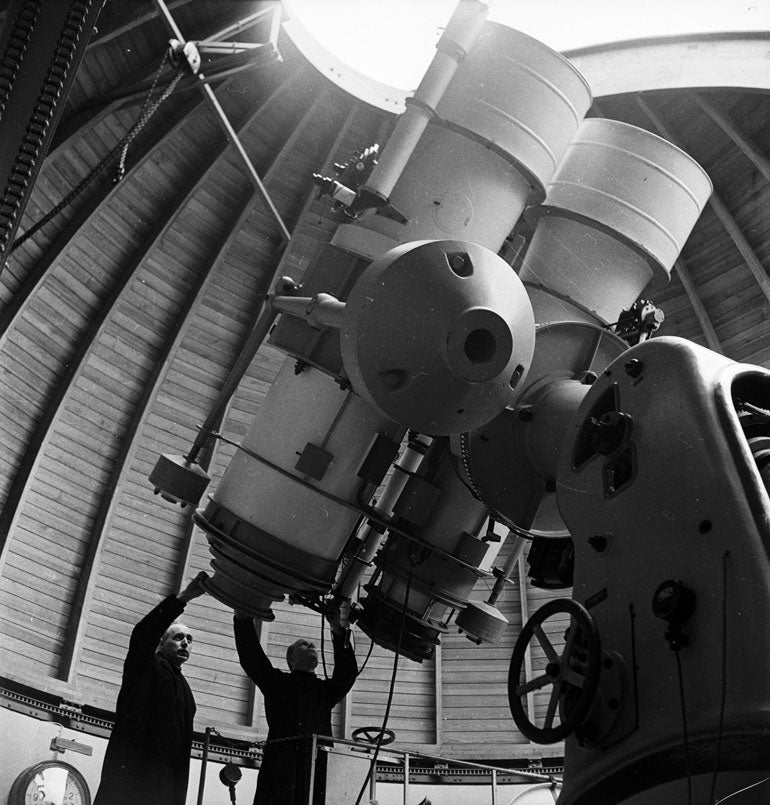Science bows to theology as the Pope dismantles Vatican observatory

Your support helps us to tell the story
From reproductive rights to climate change to Big Tech, The Independent is on the ground when the story is developing. Whether it's investigating the financials of Elon Musk's pro-Trump PAC or producing our latest documentary, 'The A Word', which shines a light on the American women fighting for reproductive rights, we know how important it is to parse out the facts from the messaging.
At such a critical moment in US history, we need reporters on the ground. Your donation allows us to keep sending journalists to speak to both sides of the story.
The Independent is trusted by Americans across the entire political spectrum. And unlike many other quality news outlets, we choose not to lock Americans out of our reporting and analysis with paywalls. We believe quality journalism should be available to everyone, paid for by those who can afford it.
Your support makes all the difference.Science is to make way for diplomacy at the Pope's summer residence, with the dismantling of the astronomical observatory that has been part of Castel Gandolfo, south of Rome, for more than 75 years. The Pope needs more room to receive diplomats so the telescopes have to go.
The eviction of the astronomers and their instruments, reported by the Italian daily Corriere della Sera, and their removal to a disused convent a mile away, marks the end of a period of intimacy between popes and priest-astronomers that has lasted well over a century.
Father Jose G Funes, the present director of the observatory, known as the Specola Vaticana, insisted that there was no sinister significance in the move. "It is not a downgrading of science in the Vatican," he said. "To remain within the palace would have had only a symbolic significance, whereas where we are going we will be even more comfortable. Nearly everybody is in agreement with the move even though I realise that every change produces disquiet." His predecessor, Father George Coyne, said, "I agree completely with Father Funes. We have discussed the issues many times together and with the rest of our Jesuit staff."
But symbolism is exactly what close watchers of Pope Benedict XVI see in the move: confirmation of the view that he is far less receptive to what scientists including scientists in dog collars want to tell him than his recent predecessors. He has, for example, spoken in favour of intelligent design, in flat contradiction of the views of the observatory's former director.
The popes have been conducting a love-hate affair with astronomy ever since Galileo. Of obvious interest to them, for example, are the efforts of astronomers to pin down exactly which wandering star led the three wise men to the stable in Bethlehem 2,000 years ago.
The latest attempt was published by Grant Matthews, professor of theoretical astrophysicist at America's University of Notre Dame. The "star in the East", he says, could have been Mars, Jupiter and Saturn aligned in the constellation Pisces on 20 February 6BC, or Jupiter, the moon and Saturn aligned in Aries on 17 April of the same year, or Jupiter and Venus closely aligned in Leo 11 years later. The middle possibility is the strongest, he believes.
But it was the more mundane question of the reform of the calendar that first induced the popes to give house room to the star-gazers in the late 16th century. "Pope Gregory XIII ordered a tower to be erected... and to be fitted out with the greatest and best instruments of the time," Pope Leo XIII wrote in 1891. "There he held the meetings of the learned men to whom the reform of the calendar had been entrusted ... When touched by the rays of the sun that are allowed to enter from above, the designs demonstrate the error of the old reckoning."
Another rapprochement occurred in the 18th century, but the latest phase in the relationship was initiated by Leo XIII himself in 1891. In 1935 the observatory was moved out of Rome to the summer palace to escape the growing atmospheric pollution of the capital.
In 1978, Father Coyne was appointed director of the Specola Vaticana. He held the job throughout the long reign of Pope John Paul II. The theological conservatism of the Polish pope cohabited oddly with an enthusiastic acceptance of the findings of science. In a speech in 1996, for instance, he came close to accepting the theory of evolution.
Father Coyne's tenure did not long outlast the reign of John Paul. When Coyne retired in August 2006, it was rumoured that hostility to intelligent design had been his undoing. Benedict's rejection of the Enlightenment, and the reign of scientific truth which it ushered in, is well established.
And now Father Coyne's former domain is to be dismantled. The two astronomical domes which crown the roof of the lakeside palace are to remain to be transformed into museums.
Join our commenting forum
Join thought-provoking conversations, follow other Independent readers and see their replies
Comments